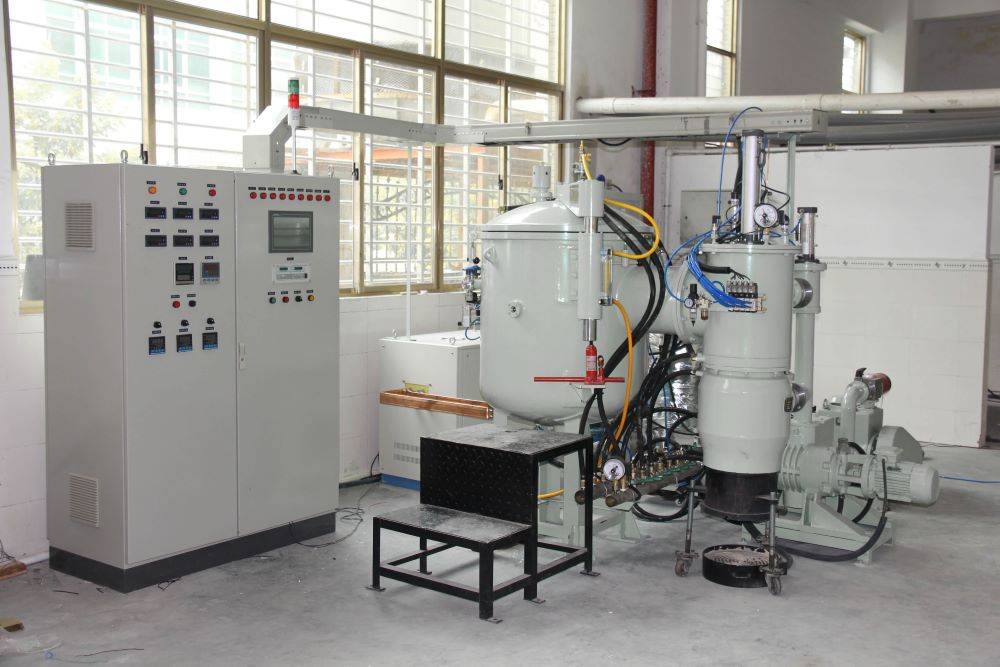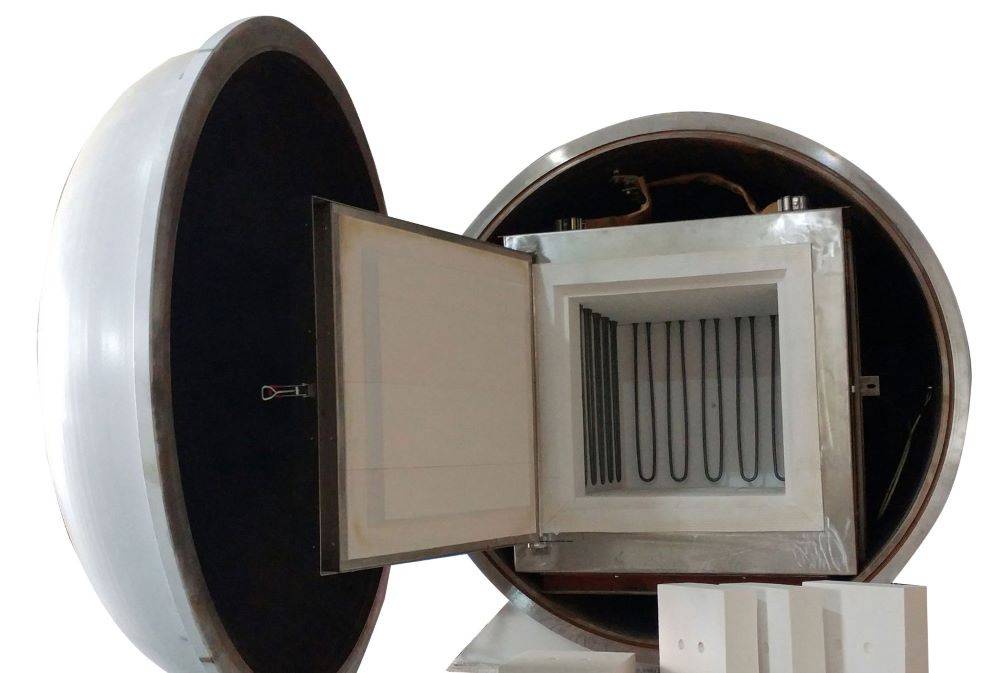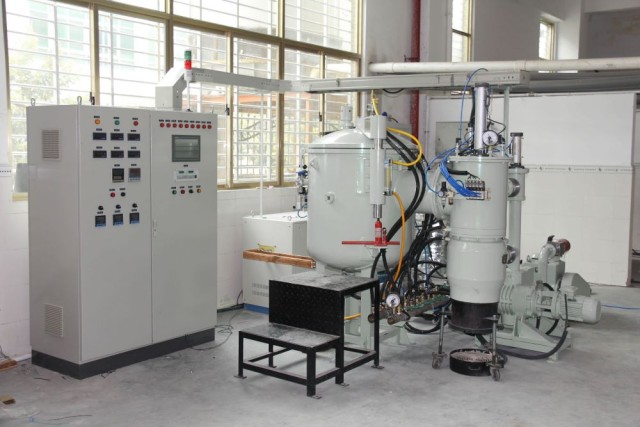Furnace Structure and Materials
Vertical and Horizontal Series
Vacuum furnaces are distinguished by their distinct structural designs, primarily categorized into vertical and horizontal series. Each series offers unique operational advantages and is tailored to meet specific industrial needs.
Vertical Series
In the vertical series, the bell jar lifting mechanism is a common feature. This design allows for efficient heat distribution and containment, making it ideal for processes requiring precise temperature control. The vertical orientation also facilitates easy loading and unloading of materials, reducing processing time and enhancing productivity.
Horizontal Series
On the other hand, the horizontal series is characterized by single door structures, which provide a more straightforward access point for larger workpieces. This design is particularly beneficial for applications involving bulky or irregularly shaped materials. The horizontal configuration also simplifies the integration of additional components, such as automated handling systems, further streamlining the production process.
Both series are integral to the versatility and efficiency of vacuum furnaces, each catering to different operational requirements and industry standards.

Furnace Body Materials
When selecting a vacuum furnace, the choice of furnace body materials is a critical decision that can significantly impact the performance and longevity of the equipment. Common options include stainless steel, carbon steel, and a combination of both materials in a double-water-cooled structure. Each of these materials offers distinct advantages and is suited to different operational requirements.
-
Stainless Steel: Known for its corrosion resistance and aesthetic appeal, stainless steel is often preferred in environments where cleanliness and durability are paramount. It is particularly suitable for applications involving high-temperature processes that require a stable and inert atmosphere.
-
Carbon Steel: This material is favored for its strength and cost-effectiveness. Carbon steel is ideal for applications where the furnace will be subjected to high mechanical stress and where the operational environment does not demand the corrosion resistance of stainless steel.
-
Double-Water-Cooled Structure: Combining stainless steel and carbon steel, this hybrid design leverages the strengths of both materials. The outer shell is typically made of carbon steel for structural integrity, while the inner lining is constructed from stainless steel to provide corrosion resistance. This configuration also includes a water-cooling system that helps dissipate heat and protect the structural integrity of the furnace.
Choosing the right material for the furnace body involves a careful consideration of the operational environment, the types of processes the furnace will be used for, and the expected service life of the equipment.
Heating and Insulation
Heating Methods
Heating in vacuum furnaces can be achieved through two primary methods: resistance heating and induction heating. Each method has its unique advantages and is suited for different operational requirements and material processing needs.
Resistance Heating
Resistance heating relies on the principle of electrical resistance to generate heat. Common materials used for resistance heating elements include molybdenum, tungsten, and graphite. These materials are chosen based on their ability to withstand high temperatures without significant degradation. For instance, molybdenum is favored for its high melting point and excellent thermal conductivity, making it ideal for applications requiring temperatures up to 2000°C. Similarly, tungsten, with its even higher melting point, is suitable for processes demanding temperatures exceeding 2000°C. Graphite, on the other hand, offers a balance of high-temperature resistance and cost-effectiveness, making it a versatile choice for a wide range of applications.

Induction Heating
Induction heating, on the other hand, utilizes electromagnetic induction to heat conductive materials. This method is particularly effective for applications requiring rapid and localized heating, such as in the case of metal forging and annealing processes. The choice of materials for induction heating coils is less critical compared to resistance heating, as the primary focus is on the material's conductivity and the efficiency of the induction coil design. However, materials like copper and aluminum are commonly used due to their high electrical conductivity and relatively low cost.
Both heating methods have their specific use cases and are selected based on the maximum temperature required, the type of material being processed, and the desired heating rate. Understanding these nuances is crucial for optimizing the performance and longevity of a vacuum furnace.
Insulation Types
Insulation in vacuum furnaces serves as a critical component to maintain the required temperature and prevent heat loss. It can be broadly categorized into two main types: all-metal and composite insulation.
All-Metal Insulation typically involves the use of high-performance metals such as heat-resistant stainless steel and molybdenum screen. These materials are chosen for their excellent thermal conductivity and resistance to high temperatures, ensuring that the furnace can operate efficiently even under extreme conditions.
Composite Insulation, on the other hand, combines various materials to optimize thermal performance. This type of insulation often includes a mix of fibers and other non-metallic materials that offer superior thermal resistance. For instance, ceramic fibers are commonly used due to their ability to withstand high temperatures while maintaining low thermal conductivity. This combination of materials allows for a more versatile and effective insulation solution, tailored to meet the specific needs of different vacuum furnace applications.
Vacuum System and Control
Vacuum System Components
The vacuum system in a vacuum furnace is a complex assembly of components designed to maintain the desired vacuum level. This system typically includes a variety of pumps such as ion, turbomolecular, mechanical, and others, each serving a specific function in the vacuum process. These pumps are interconnected through a network of valves and pipelines, which are crucial for controlling the flow of gases and maintaining the vacuum integrity.
Key Components of the Vacuum System
-
Pumps: The heart of the vacuum system, pumps like mechanical, booster, diffusion, and turbomolecular, are essential for creating and maintaining the vacuum. Each type of pump has its unique mechanism and application, ensuring that the system can achieve the required vacuum levels efficiently.
-
Valves: Valves play a critical role in regulating the flow of gases within the system. Types of valves include high vacuum isolation valves, vacuum release valves, and backing valves, each designed to manage different aspects of the vacuum process.
-
Piping Manifolds: The piping manifolds connect the various components of the vacuum system, ensuring a seamless flow of gases. These manifolds are strategically placed to optimize the system's performance and maintain the integrity of the vacuum.
-
Vacuum Measurement Equipment: Accurate measurement of the vacuum level is crucial for effective control. Equipment such as vacuum gauges and molecule counters provide real-time data, allowing operators to adjust the system parameters as needed.
Components of Vacuum Pumps
-
Pump Head: The pump head is the core component of a vacuum pump, housing the mechanism responsible for creating the vacuum. The material used for the pump head varies depending on the specific application and requirements.
-
Motor: The motor powers the pump head, enabling it to function effectively. The choice of motor is critical for ensuring the pump's efficiency and longevity.
-
Inlet and Outlet Ports: These ports are essential for connecting the pump to the vacuum system and the atmosphere, respectively. Proper alignment and sealing of these ports are vital for maintaining the vacuum.
-
Vacuum Gauge: The vacuum gauge measures the pressure inside the system, providing operators with the information needed to make real-time adjustments to the vacuum level.
By understanding the intricacies of these components, one can better appreciate the complexity and precision required to operate a vacuum furnace effectively.

Temperature and Vacuum Control
Temperature control in vacuum furnaces is meticulously managed through advanced intelligent controllers, which ensure precise regulation of the heating process. These controllers are often integrated with overtemperature safety mechanisms, allowing for digital manual settings that can range from 0°F to 3100°F, utilizing thermocouples of Type S for accurate temperature readings.
Vacuum measurement, on the other hand, relies on sophisticated instruments such as a Vacuum Gauge Controller with multiple stations. This controller can monitor the chamber and the pumping system using both thermocouple and Penning (cold cathode) gauges. By providing dedicated setpoints, it ensures that all critical vacuum-related process functions are precisely controlled, thereby maintaining the integrity and accuracy of the vacuum environment.
The synergy between temperature and vacuum control is crucial for process compliance. The integration of these systems allows for real-time adjustments, ensuring that both temperature and vacuum levels remain within the specified parameters, thus optimizing the overall efficiency and reliability of the vacuum furnace operation.
Process Monitoring and Control
In vacuum furnace systems, the integration of advanced monitoring and control technologies is crucial for ensuring efficient and precise operations. Recorders and programmable logic controllers (PLCs) play a pivotal role in this domain, offering a range of operational modes to suit various industrial needs. These devices are instrumental in capturing and analyzing real-time data, thereby facilitating informed decision-making and enhancing process efficiency.

The operational modes available include manual, semi-automatic, and full-automatic settings. Each mode caters to different levels of human intervention and automation, allowing for flexibility in managing complex processes. For instance, in manual mode, operators retain full control over the process, making it ideal for situations requiring immediate human oversight. Conversely, full-automatic mode minimizes human intervention, relying on pre-programmed instructions to execute tasks autonomously, which is particularly beneficial for repetitive and high-precision operations.
Moreover, the use of PLCs ensures that the system can adapt to various operational scenarios, providing a robust framework for process control. These controllers are designed to handle complex logic and sequences, ensuring that the vacuum furnace operates within predefined parameters, thereby maintaining consistency and reliability in the process.
In summary, the combination of recorders and PLCs, along with the flexibility offered by different operational modes, significantly enhances the monitoring and control capabilities of vacuum furnaces, contributing to improved efficiency and process accuracy.
Safety and Protection Features
Alarm and Protection Systems
The safety of a vacuum furnace is paramount, and this is ensured through a comprehensive alarm and protection system. This system is designed to monitor and respond to potential hazards, such as over-temperature conditions, water shortages, pump malfunctions, and other anomalies.
Key Components of Alarm and Protection Systems
- Over-Temperature Protection: Sensors continuously monitor the furnace temperature, triggering alarms and safety protocols if the temperature exceeds predefined limits.
- Water Shortage Detection: Systems are in place to detect any shortage in the water supply, which is crucial for cooling the furnace components. Immediate alerts are issued to prevent overheating and potential damage.
- Pump Monitoring: Regular checks are conducted on the vacuum pumps to ensure they are functioning correctly. Any issues with the pumps can lead to a loss of vacuum, which is critical for the furnace's operation.
- General Anomaly Detection: Beyond the specific protections, the system is equipped with general anomaly detection capabilities. This ensures that any unusual behavior within the furnace is promptly identified and addressed.
By integrating these advanced safety features, vacuum furnaces provide a robust environment for high-temperature processes, ensuring both equipment longevity and operator safety.
Related Products
- Vacuum Heat Treat Sintering Brazing Furnace
- Vacuum Heat Treat and Pressure Sintering Furnace for High Temperature Applications
- Molybdenum Vacuum Heat Treat Furnace
- Vacuum Hot Press Furnace Machine Heated Vacuum Press
- 2200 ℃ Graphite Vacuum Heat Treat Furnace
Related Articles
- Exploring Tungsten Vacuum Furnaces: Operation, Applications, and Advantages
- Vacuum Hot Press Furnace: A Comprehensive Guide
- Mastering Vacuum Furnace Brazing: Techniques, Applications, and Advantages
- Vacuum Induction Melting Furnace: Principle, Advantages, and Applications
- Materials Science with the Lab Vacuum Furnace
















